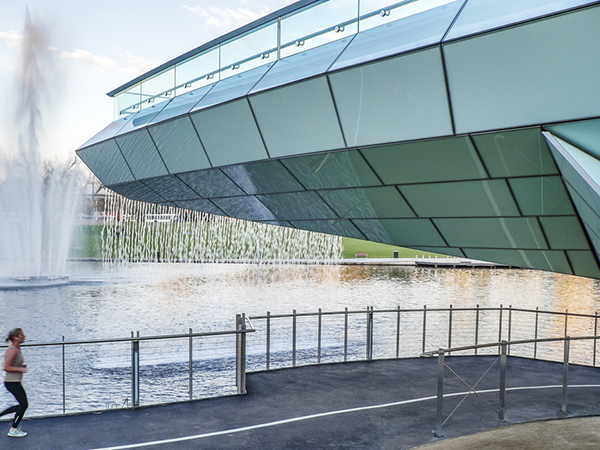Tonkin Zulaikha Greer won a design competition run by the South Australian Government Department of Planning, Transport and Infrastructure to design the new Riverbank Precinct Pedestrian Bridge, in collaboration with engineers and urban designers, Aurecon and landscape architects Taylor Cullity Lethlean.
The project was the first part of the implementation of the Riverbank Masterplan, a strategic approach to linking and enlivening the city’s arc of waterfront parkland, cultural and education precincts and facilities.
The 8m wide pedestrian bridge connects the upgraded Adelaide Oval to the city, spanning nearly 75m over the River Torrens through the nationally heritage-listed Adelaide Parklands. The bridge enables pedestrians are able to easily access the Festival Centre, Adelaide Railway Station and the improved Adelaide Convention Centre.

The project’s vision was to create not only the bridge, but also a series of new ‘people spaces’ along the waterfront, each with its own character and amenity.
To the south, expanded facilities for the Festival Centre include restaurants and offices, outdoor relaxation and event spaces, and a civic-scaled stairway that leads down to the riverfront. This generous stepped outdoor space includes a major water cascade and significant planting.

To the north, the curve of the bridge encloses an informal amphitheatre as well as a plaza that links to the Oval’s forecourt. The termination of the bridge is a dramatic Belvedere that hovers above the river, with a cascading wall of water that aerates and cleanses the lake.
The elegant curve of the bridge sweeps lightly through its iconic setting, complementing the adjoining structures and having minimal impact on the surrounding green spaces.
It has been designed with a sculptural lightness and simplicity, supported on dramatically-angled V columns, its faceted profile, clad in white glass, playfully reflects the water and surrounding greenery.

